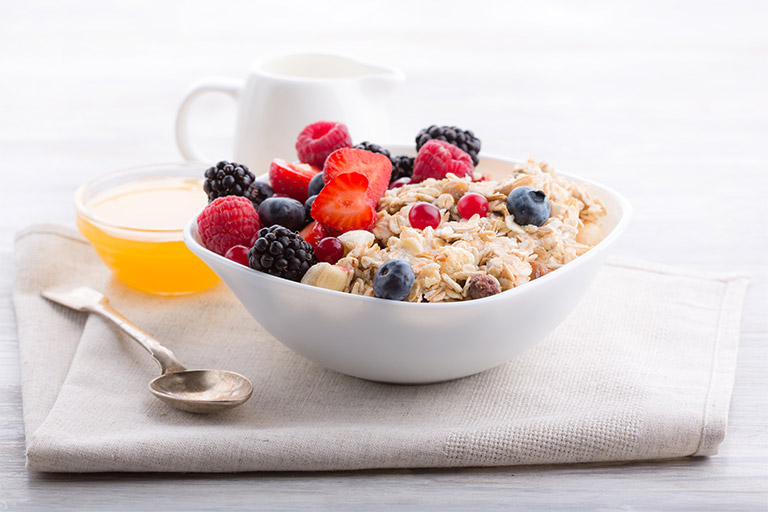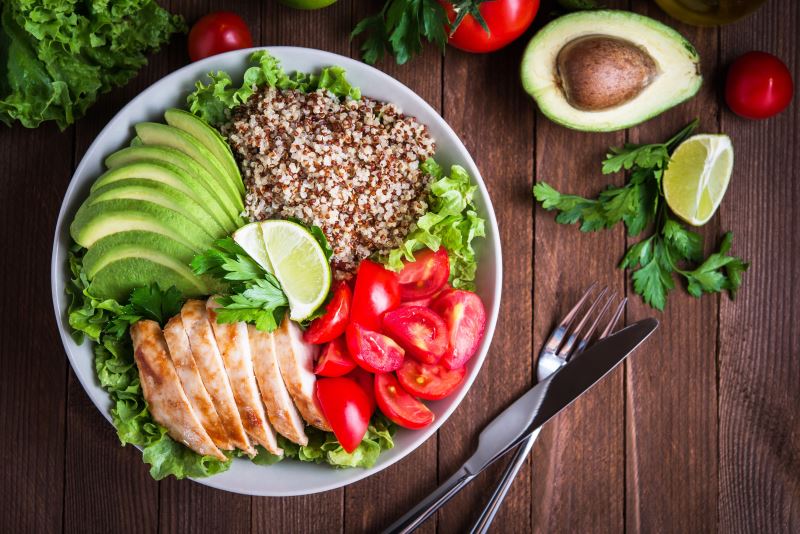The MIND Diet: Key Principles and Benefits
The MIND diet, which stands for Mediterranean-DASH (Dietary Approaches to Stop Hypertension) Diet Intervention for Neurodegenerative Delay, is designed to promote brain health and reduce the risk of Alzheimer’s disease. It utilises elements of the DASH and Mediterranean diets, both known for their health benefits.
What is the MIND Diet?
Researchers at Rush University Medical Centre in Chicago developed the MIND diet, which discusses food that improves brain health and slows cognitive decline.
What are the Key Principles of the MIND Diet?
The two key influences on the MIND diet include:
1. Mediterranean Diet Influence
The Mediterranean diet emphasises the consumption of plant-based foods, whole grains, fish, and healthy fats, particularly olive oil. It is characterised by its high intake of fruits, vegetables, legumes, nuts, and seeds and its moderate consumption of fish and poultry. Processed foods and red meat are limited, while olive oil is the primary fat source.
2. DASH Diet Influence
The DASH diet focuses on decreasing sodium intake and enhancing the consumption of nutrient-dense foods like fruits, vegetables, whole grains, and lean proteins. It is designed to help lower blood pressure and improve cardiovascular health by focusing on minimal cholesterol, saturated fat, and total fat foods.
What are the Foods to Include in the MIND Diet?
The MIND diet highlights 10 brain-healthy diet food groups:
1. Leafy Vegetables: At least six servings per week. Examples: spinach, kale, and collard greens.
2. Other Vegetables: At least one serving per day. Examples: carrots, bell peppers, and tomatoes.
3. Nuts: At least five servings per week. Examples: almonds, walnuts, and pistachios.
4. Berries: At least two servings per week. Examples: blueberries, strawberries, and raspberries.
5. Beans: At least four servings per week. Examples: lentils, chickpeas, and black beans.
6. Whole Grains: At least three servings per day. Examples: oats, quinoa, and brown rice.
7. Fish: At least one serving per week. Examples: salmon, mackerel, and sardines.
8. Poultry: At least two servings per week. Examples: chicken and turkey.
9. Olive Oil: Use as the primary cooking oil.
10. Wine: Up to one glass daily, ideally red wine, for its resveratrol content.
What are the Foods to Limit in the MIND Diet?
The MIND diet recommends limiting five types of foods that can adversely affect brain health:
1. Butter and Margarine: Consume less than one tablespoon per day.
2. Cheese: Limit consumption to less than one serving per week.
3. Red Meat: Consume no more than four servings per week.
4. Pastries and Sweets: Aim for fewer than five servings per week.
5. Fried or Fast Food: Keep consumption to less than one serving per week.
What are the Benefits of the MIND Diet?
Here are the numerous MIND diet benefits:
1. Reduced Risk of Alzheimer’s: According to a study published in the Metabolism Open Journal, strict adherence to the MIND diet lowers the likelihood of Alzheimer’s disease by up to 53% and moderate adherence by 35%.
2. Slowed Cognitive Decline: The diet has been linked to slower cognitive decline in older adults.
3. Heart Health: The MIND diet promotes a heart-healthy eating plan, which can reduce the occurrence of cardiovascular diseases.
4. Overall Health: Encourages a balanced, nutrient-rich diet, promoting general well-being.
What are Some Tips for Starting the MIND Diet?
Here are some practical tips to help one get started with the MIND diet:
1. Gradual Changes: Include one or two MIND diet principles into weekly meals.
2. Meal Planning: Plan meals to ensure that recommended servings of each food group are included.
3. Healthy Substitutions: Replace unhealthy foods with MIND diet-approved alternatives. For example, use olive oil instead of butter, and choose nuts instead of chips for snacks.
4. Experiment with Recipes: Try new recipes that feature brain-healthy diet ingredients.
5. Stay Hydrated: Individuals must drink ample amount of water throughout the day.
What Does a Sample Meal Plan Look Like?
Breakfast:
1. Greek yoghurt topped with berries and a sprinkle of nuts
2. Whole-grain toast with avocado
Lunch:
1. Spinach salad with cherry tomatoes, grilled chicken, and olive oil dressing
2. Lentil soup with a side of whole-grain bread
Dinner:
1. Baked salmon served with a quinoa and vegetable medley
2. Steamed broccoli with a squeeze of lemon
Snacks:
1. An apple with a handful of almonds
2. Carrot sticks with hummus
The MIND diet is a flexible and easy-to-follow pattern that emphasises a nutrient-rich, healthy diet while limiting foods that may harm cognitive function, making it a supportive diet for the brain and improving overall well-being. Schedule a food intolerance test with Dr Lal PathLabs to ensure dietary support for optimal brain health and overall well-being.
FAQs
1. How much weight can you lose by following the MIND diet?
Weight loss varies by individual. The MIND diet focuses more on brain health than weight loss, but following its healthy eating plan can lead to gradual weight loss.
2. Does the MIND diet really work?
Yes, studies show the MIND diet can significantly reduce the risk of Alzheimer’s disease and slow cognitive decline, making it beneficial for brain health.
















